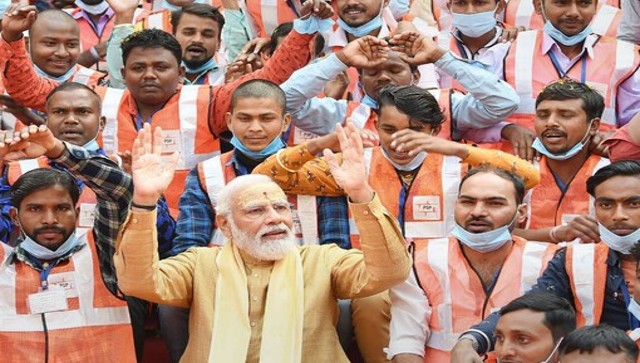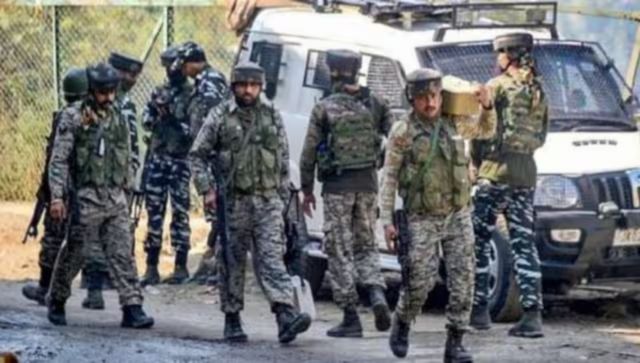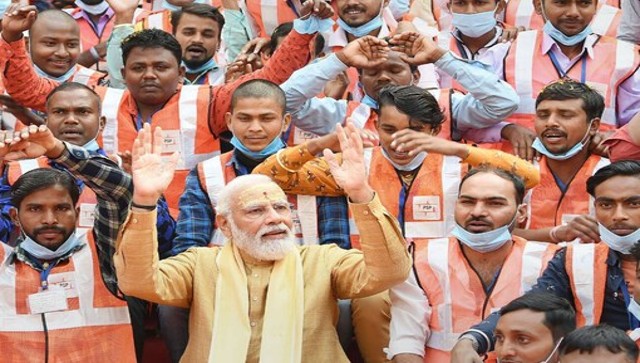The month of March continues to prove deadly for security forces battling Naxals in Chhattisgarh. A majority of the attacks on security personnel — including Tuesday’s ambush which killed nine CRPF jawans — have taken place in the month of March, while subsequent months of April and May have also witnessed large-scale casualties.
On Tuesday, the Maoists blew up a mine protection vehicle (MPV), also known as an anti-landmine vehicle, in Chhattisgarh’s Sukma district, killing nine and wounding two CRPF personnel.
The blast was triggered by using improvised explosive device (IED) and the intensity was so high that the MPV, which is meant to guard against landmines, was ripped into pieces. Eight of the 11 jawans in the CRPF’s 212 battalion, including the driver of the vehicle, died on the spot, while one succumbed to his injuries on way to a local hospital.
But what actually happened?
According to CRPF sources, there had been one encounter between the security forces and the Maoists, while the other was an ambush. The CRPF said on record that in an ongoing anti-Naxal operation in Sukma, an encounter took place between the 208 CoBRA battalion and the Maoists at around 8 am on Tuesday. And later, in an ambush, the Maoists blew up the MPV.
“Seeing the response of 208 CoBRA battalion, the Naxals fled. Again at about 12.30 pm, the Naxals targeted another team of 212 battalion of CRPF between Kistaram and Palodi villages in Sukma district, in which the MPV was blown off by triggering an IED,” a CRPF official said.
The Maoists reportedly used 50 kilograms of explosives to blow the MPV, as the vehicle was torn into pieces.
A failed defence
According to information received late in the evening from sources based in Sukma, during the encounter between the Maoists and the CRPF personnel, the latter fired three rounds from an under barrel grenade launcher (UBGL), but the grenades failed to explode.
UBGL is a smart and sophisticated weapon used by security forces against enemy troops, by lobbing grenades in quick succession. “During the encounter, CRPF fired three rounds from the UBGL. Par teeno grenade phate hi nahi. (But the three grenades failed to explode),” the source said. Firstpost couldn’t independently verify the information.
According to a ballistics expert, had the grenades launched by the UBGL exploded, they could have killed a large number of Maoists. UBGLs have a range between 400 and 500 metres, and a grenade, if targeted at a group, can cause major casualties.
Who’s behind the attack
According to the Chhattisgarh’s anti-Naxal operation task force source, the ambush on the CRPF’s 212 battalion was launched by the military wing of the banned CPI (Maoist). The mastermind behind the ambush reportedly was Hidma, the commander of the military battalion of the dreaded Naxal People’s Liberation Guerrilla Army (PLGA). “It was part of Tactical Counter Offensive Campaign (TCOC) of the Maoists, which is undertaken during the summer months,” the source said.
The TCOC is undertaken by the Naxals during summer months — it begins in March-April and continues for three to four months — when armed Naxal cadres undertake special violent action against security forces and others to gain ground, re-group and strategise their plan of action before the onset of summer. The aim is to consolidate their stranglehold and assert their influence in the area.
Exactly a year ago, on 11 March, 2017 , 12 CRPF jawans were killed in a Maoist ambush at Kottacheru in the Bhejji area of Sukma, but the incident was subsumed in the deafening celebrations of Uttar Pradesh Assembly election victory. The attack, similar to the one carried out on Tuesday, had been launched by the Military Battalion of the CPI (Maoist). In that case, the ambush was led by Sonu while Hidma provided the backup.
The Maoist cadre in Bastar has two military battalions — one under Hidma that operates from Sukma, while the other is from Marh-Kanker-Gariaband. Hidma, who operates under a pseudonym, is considered the “best fighter and strategist” in guerrilla warfare among Maoists in this hotbed of Left-Wing Extremism (LWE).
March and Sukma
The month of March is considered as the most opportune month for launching TCOC, with the weather making a transition from winter to summer and trees shed trees. The leafless landscape provides good visibility in the dense forests of Sukma, one of the worst affected districts of the country. So while the Maoists look out for an ambush, the security forces aim at encounter operations.
The Maoists observe ‘Janpituri Saptah’ in March, as they did recently. During this week-long observation, Maoists chalk out strategies for launching large-scale attacks on security forces. The meeting is attended by top Naxal leaders of the central committee and CPI (Maoist) politburo," said RS Bhatnagar, a Bastar-based expert on Naxal movement in Chhattisgarh.
“The military battalion of Maoists is based in Sukma and it’s a safe haven for them due to the dense forest and extremely difficult terrain for outsiders and security forces. It’s easier for Maoist cadres to target security personnel through ambush and they are successful almost every time. The casualty rate is higher in case of CRPF personnel,” added Bhatnagar.
The months of March and April have consistently witnessed large-scale casualties due to Maoist attacks on the CRPF personnel. In March 2014, 15 CRPF and policemen were killed, followed by 25 in April 2014, 25 in 12 in March 2017, 26 in April 2017, and many others in between as well.
Bastar, a deathbed
Despite the government’s promises and assurances, why do CRPF jawans die so frequently in Sukma or Dantewada in Chhattisgarh? “It’s a big question as to why, time and again, the CRPF personnel suffer at the hands of the Maoists. It’s been so long and Bastar is no longer a terrain for the CRPF or the CoBRA battalion. Was there any lapse in following the standard operating procedures? Wasn’t there any road opening teams ahead of the MPV?” questioned counter-terrorism analyst Anil Kamboj.
“Every time a large-scale casualty takes place and we lose our jawans, both the government and security agencies get into a post-mortem of the incident. Had some concrete measures been taken seriously, such incidents would have reduced. Moreover, March-April is TCOC time. It seems Maoists were well aware of the route and timing of the movement of MPV and that’s why they used such a huge explosive. This clearly shows there had been some lapse in the operation,” added Kamboj, who has led anti-Naxal operations in Bastar in the past.
“Unless the government addresses the basic problems faced by the tribals, and properly implements the Forest Rights Act and takes up rehabilitation of displaced Adivasis from their land, the Naxal menace won’t end; rather it will erupt in a gigantic proportion. Maoists are getting powerful,” said Prakash Singh, former chief of Border Security Force and former DGP, Uttar Pradesh.
“If Maoist activities are curbed through cleansing operations, the administration can step in and win over the people. But it’s not happening. As tribals are being exploited, they are drawn towards Left-wing extremism. Wherever the administration worked, Naxal menace ended. But it’s not enough. Corruption is also another reason the Maoist cause is spreading,” Singh, who is also an author and an authority on LWE, said.


)




)
)
)
)
)
)
)
)